Discover 10 hidden attractions, cool sights, and unusual things to do in Cornwall (United States). Don't miss out on these must-see attractions: Cornwall Friends Meeting House, Canterbury Presbyterian Church, and Sands Ring Homestead Museum. Also, be sure to include A. J. Clark Store in your itinerary.
Below, you can find the list of the most amazing places you should visit in Cornwall (New York).
Table of Contents
Cornwall Friends Meeting House
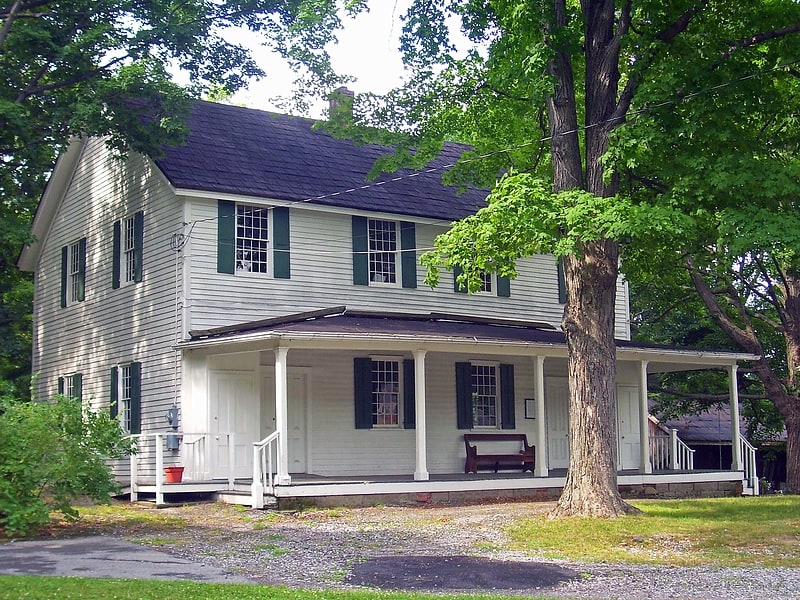
Building in Cornwall, New York. The Cornwall Friends Meeting House is a historic meeting house located on a 5.4-acre parcel of land at the junction of Quaker Avenue and US 9W in Cornwall, New York, United States, near Cornwall-St. Luke's Hospital. It is both the oldest religious building in the town, and the first one built. In 1988 it was added to the National Register of Historic Places as a well-preserved, minimally-altered example of a late 18th-century Quaker meeting house.
Built in 1790, it emulates the doubled style of meeting house pioneered by Buckingham Friends Meeting House in Pennsylvania two decades earlier. David Sands-Ring, a local convert to the Religious Society of Friends and the son of a wealthy landowner, sponsored the construction of the meeting house. At first a branch of the Nine Partners meeting near present-day Millbrook in Dutchess County, it later became an independent congregation within the Society. Members also maintain the Smith Clove Meetinghouse in Highland Mills to the south of Cornwall.[1]
Canterbury Presbyterian Church
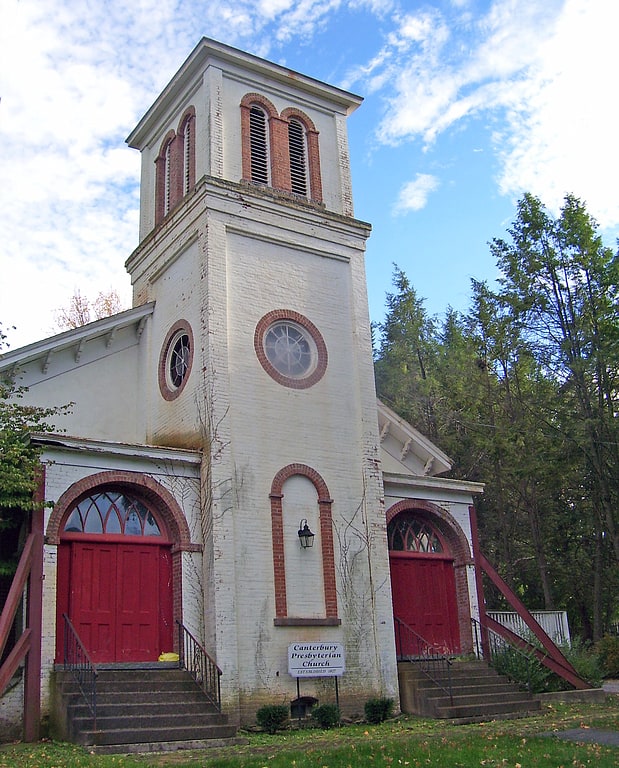
Building in Cornwall, New York. Canterbury Presbyteria] Church is located along Clinton Street in downtown Cornwall, New York, United States. It is a white stone and brick building in the Federal style, with later additions in a Colonial Revival style consistent with the earlier structure. Since 1996 it has been listed on the National Register of Historic Places.
Services were last held in 2004 as the church merged into Cornwall Presbyterian Church, which had been founded by dissident members of Canterbury. The building has been used by several local nonprofit groups. In 2018 the Church which had been in need of structural repairs was acquired and converted in to a Dance Studio.[2]
Address: Clinton Street, Cornwall
Sands Ring Homestead Museum
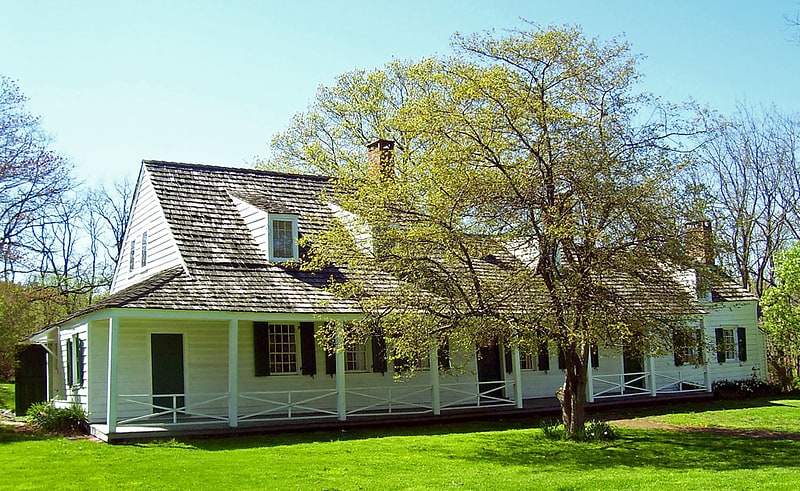
Museum in Cornwall, New York. The Sands Ring Homestead Museum is a historic house located on Main Street in the Town of Cornwall, in Orange County, New York. It was built in 1760 by Nathaniel Sands for his cousin Comfort Sands. Comfort's wife, however, did not want to leave her home on Long Island, so Nathaniel and his family moved in. In 1777, Nathaniel gave the house as a wedding present to his son David and his bride Clementine Hallock. David, a member of the Society of Friends, opened the house to the Quaker community as a meetinghouse until the Quaker Meeting House located at 60 Quaker Avenue opened in 1790. His son David established a store on the site. It was one of the first meeting places of the Cornwall Quakers. Today it is used as museum featuring Colonial-era activities.
It has been a Registered Historic Place since 1996.[3]
A. J. Clark Store
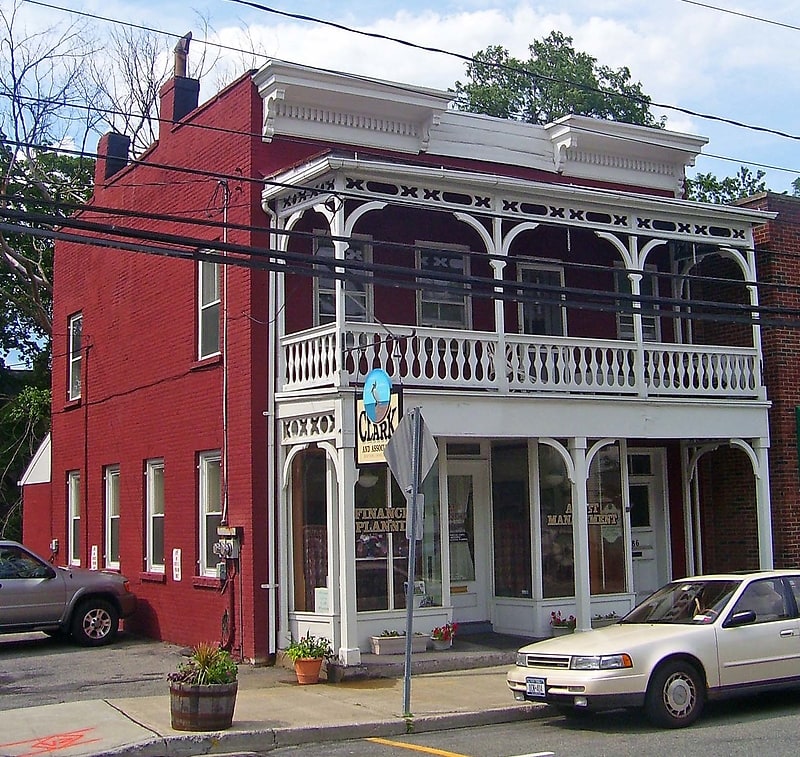
Building in Cornwall, New York. The A. J. Clark Store is located along Main Street in downtown Cornwall, New York, United States. It is a brick Italianate building dating from approximately 1875.
It has a two-foot (60 cm) parapet around its entire roof and a covered two-story porch looking out on the street. Inside, original period features such as a pressed-metal ceiling, hardwood floors, doors and staircase remain. There have been no significant changes to the building since its original construction.
Archer Clark built the building to house his butcher shop around 1875, after an 1870 fire destroyed his earlier quarters. It would continue in existence in that building for a century. Later, one of his descendants converted it into a delicatessen, and today another Clark does financial planning on the ground floor. In 1996 it was added to the National Register of Historic Places as an intact commercial building dating from Cornwall's days as a summer resort town in the late 19th century.[4]
Daniel Sutherland House
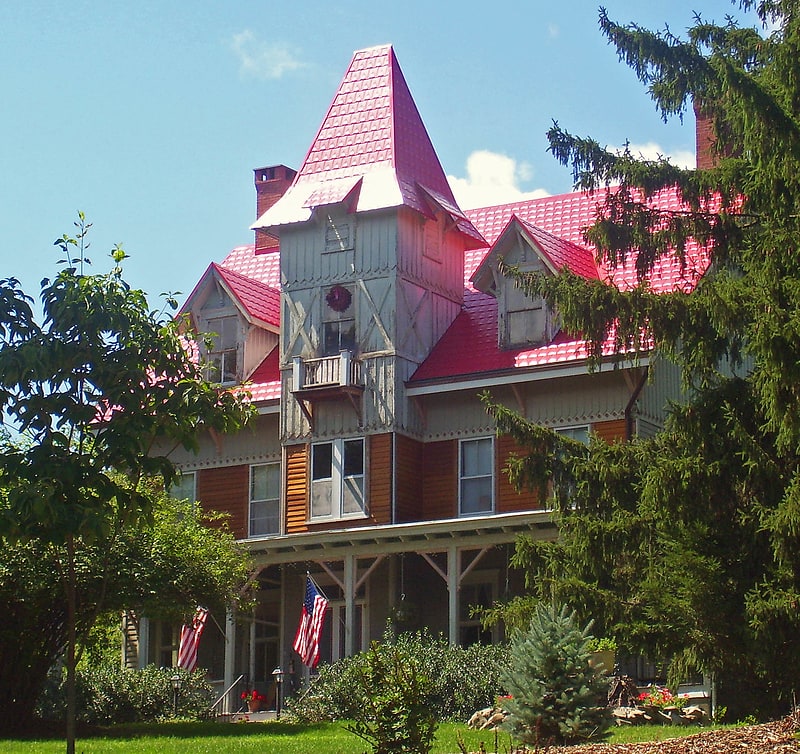
Building in Cornwall, New York. The Daniel Sutherland House is located on Angola Road in Cornwall, New York, United States. It is the late-19th century Stick-Eastlake style home of Sutherland, a grandson of David Sutherland, whose Colonial-era house is located further south on the road.
Sutherland, a local lawyer of prominence, bought several acres of his ancestral lands from the then-owners, the Chedeayne estate, around 1875. Eleven years later, he built the house in a vernacular interpretation of the then-popular Stick style. After his death the following year, his wife remarried, and around the turn of the century the building was used as a rooming house.
It has remained largely intact since its construction, with some more contemporary outbuildings. Much of the interior woodwork and furnishings are originals. It was added to the National Register of Historic Places in 1996.[5]
David Sutherland House
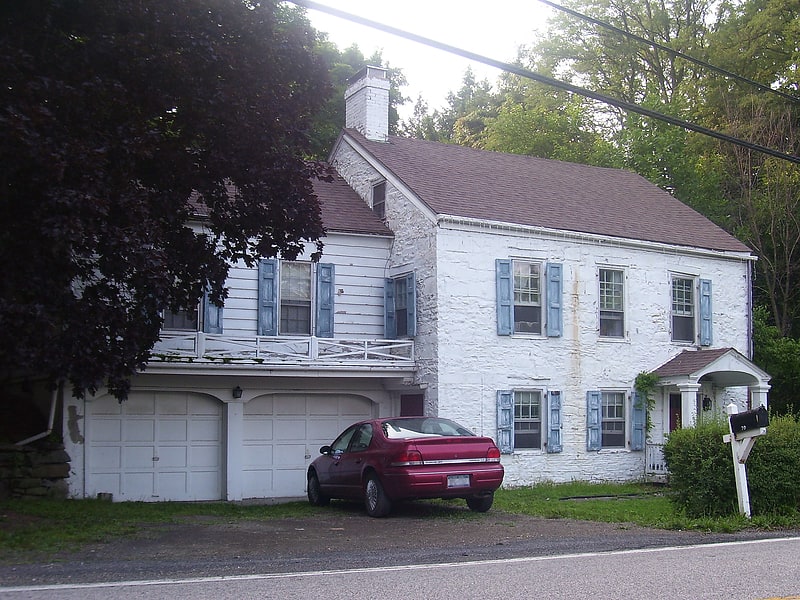
The David Sutherland House is one of three associated with that family along Angola Road in Cornwall, New York, United States. It is the oldest, a 1770 fieldstone structure.
David was a descendant of William Sutherland, one of the town's first settlers. The family had been dispossessed of most of the large acreage they owned in the area, but some members had managed to keep, or later reacquire, small parcels. He built the house on one of them, now reduced and subdivided to the three-quarter acre (2,940 m2) lot it stands one today. Due to the steep hillside, the house has no cellar and the top story is at ground level in the rear.
It has remained relatively unchanged since then. It is located on the north side of the road, about midway between downtown Cornwall and US 9W. The house of Sutherland's grandson Daniel is a short distance to the northeast, closer to town; his son Joseph's Cromwell Manor is a mile to the southwest. The inside of the house contains the original fireplace, with Federal style mantel, some doors, and timber supports in the kitchen.
Sutherland sold it to his nephew Patrick, a veteran of the Revolutionary War, in 1784. He was a person of some prominence in the town, and records indicate the Town Board met there in 1798 and again between 1800 and 1805. The year after that, he left the region for the Finger Lakes and the house has passed through many owners since. It was added to the National Register of Historic Places in 1996.[6]
Patrick Piggot House
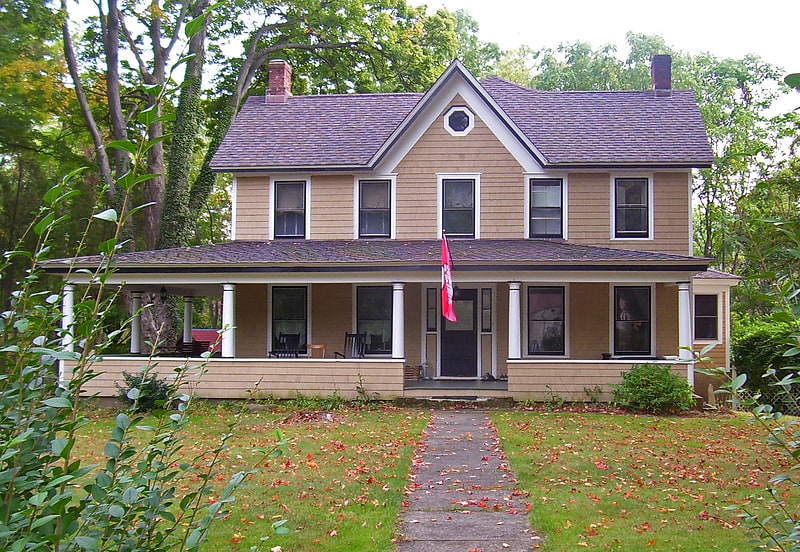
Building in Cornwall, New York. The Patrick Piggot House, also known as Angola Lodge, is located on Angola Road just east of US 9W in Cornwall, New York, United States. It has gone from being a farmhouse to a summer boardinghouse back to a private dwelling once again.
Piggot and his wife Ellen bought the property from local landowner Henry Chedeayne in 1869. That summer they contracted with Mead and Taft to build a farmhouse. They designed a simple Queen Anne home, less ornate than the Cornwall house that later became popular novelist Amelia Barr's Cherry Croft summer home. It had two storeys and a cross-gabled roof.
They and their seven children worked on the family farm until 1910, when the Chedeayne estate foreclosed on them after they failed to pay their mortgage. In 1916 it was sold to a Miriam Williams, who renovated and modified it slightly and then in turn sold it to Max Meyers. He found the house perfect for adaptation into a summer boardinghouse. The wide floors offered enough space for guest rooms and their symmetrical windows encouraged light breezes through the house. Downtown Cornwall and the Hudson Highlands were located short walks away.
Angola Lodge peaked in the 1930s and '40s, after which vacationers began preferring shorter vacations located further away. Eventually it was sold and restored to its original use. The original windows and many of the original interior remains. It was added to the National Register of Historic Places in 1998.[7]
Scribner House
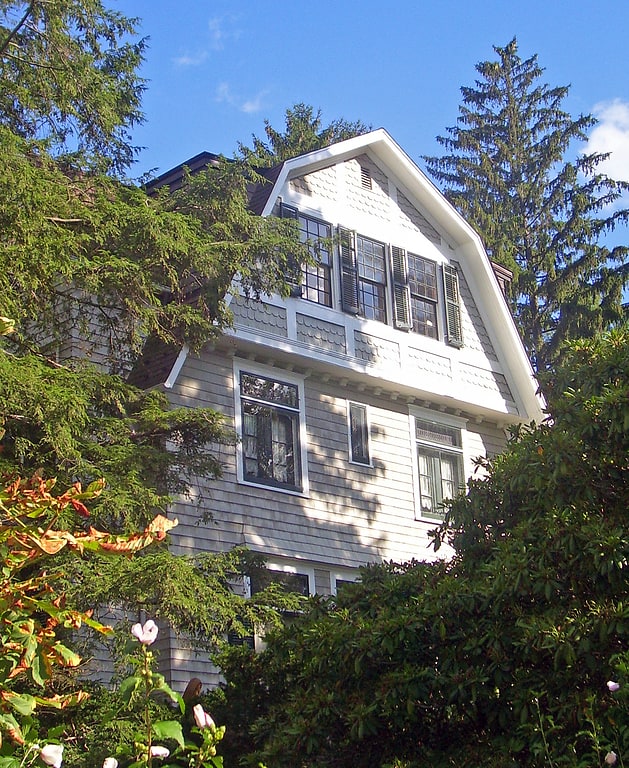
The Scribner House is located on Roe Avenue in Cornwall, New York, United States. It was built in 1910 as the main house for the summer estate of New York City publishing executive Charles Scribner II, one of Charles Scribner's Sons.
It combines Colonial Revival interiors with a Shingle style exterior, including some hints of the Arts and Crafts Movement. After the Scribners sold the estate, most of the land was sold and this is all that remains. In 1996 it was listed on the National Register of Historic Places.[8]
Oliver Brewster House
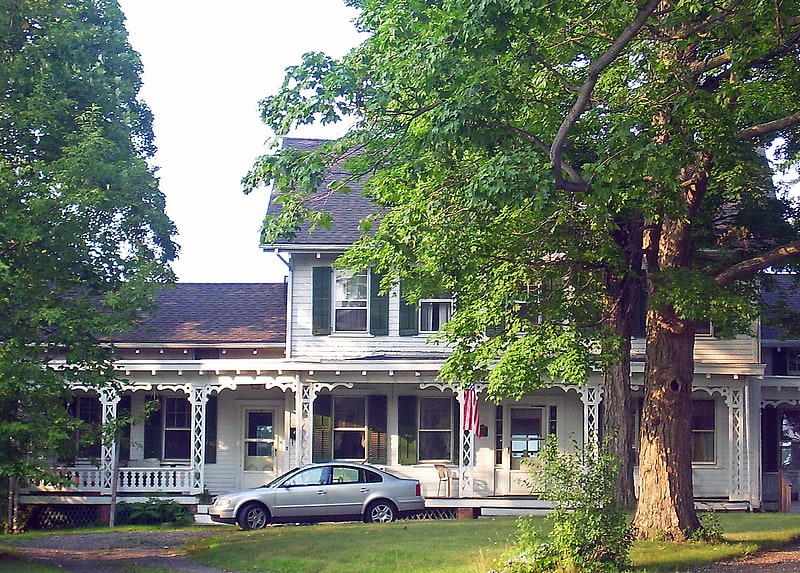
Home in Cornwall, New York. The Oliver Brewster House is a Gothic Revival home located on Willow Avenue in Cornwall, New York, United States, right across from Willow Avenue Elementary School. It was originally built as a farmhouse in the mid-19th century. Later, as Cornwall became a popular summer resort for visitors from New York City, it was expanded and renovated for use as a boardinghouse as well.[9]
Cromwell Manor
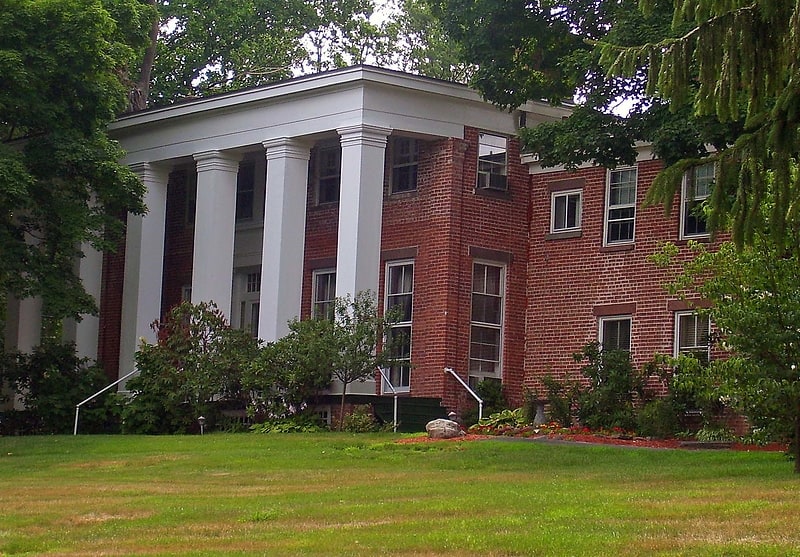
Cromwell Manor, also known as the David Cromwell House and Joseph Sutherland House, is located on Angola Road in Cornwall, New York, United States, just south of its intersection with US 9W. It consists of four properties, two of which are of note: the 1820 manor house, built in a Greek Revival style and added onto in 1840 and a 1779 cottage known as The Chimneys, the original home on the site.
When built, it was one of the first large houses in rural Cornwall built as a luxury home rather than a farmhouse, and one of the few Greek Revival buildings built of brick in the town. After over a century as a Cromwell family home, it was sold and became a teachers' retreat. It is currently operated as a bed and breakfast, with both properties available to guests. In 1996 it was added to the National Register of Historic Places.[10]